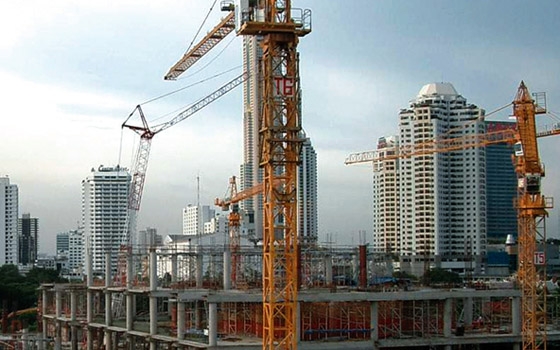The Saudi construction and manufacturing sectors will remain the key beneficiaries in 2013, growing at 10.5 percent and 8.5 percent, respectively, National Commercial Bank (NCB) said in its April “Saudi Economic Review”.
“Our projections for the two sectors are supported by buoyant activity in the projects’ market and strong business confidence. During 2012, the value of awarded construction contracts remained above the SR200 billion threshold, registering SR235 billion, albeit falling short from the historical record of SR270 billion in 2011.”
The awarded contracts in the manufacturing sector reached SR17.8 billion in 2012, the fourth largest share across all sectors, surpassed only by the oil, transportation and power sectors, with Ma’aden aluminum smelter awarding the highest contracts by value.
Ostensibly, the role of the government is critical, the report said, whereby it signed approximately 3,117 capex-related contracts with the private sector valued at an estimated SR172.9 billion, according to the Ministry of Finance.
However, the report expressed concern about the recently released report by the Saudi Control and Investigation Board (SCIB) that detailed 650 projects facing delays and that will need to be financed from excess surpluses of previous budgets.
“We believe that the government’s adamancy in pursuing diversification have to be matched by strong supervisory structure that ensures execution within strict timeframes given the enormity of the projects whether in size or number,” it said.
Accordingly, the recent decision by the Ministry of Transportation to withdraw a number of failed projects from contractors facing myriad challenges is a step in the right direction. Looking ahead, among the various sectors surveyed in NCB’s Business Optimism Index (BOI), construction, trade & hospitality, and manufacturing were the only sectors to register index values similar to or above the composite index for the non-hydrocarbon sector in 1Q 2013, standing at 63, 57 and 55 points, respectively, which indicates expectations of further expansion on the back of higher volume of sales and new orders.
Optimism levels in the construction sector were the highest among all sectors, with 50 percent of the firms planning to invest in business expansion. Obviously, approving the mortgage law back in July have impacted sentiments positively and will continue to do so as SAMA finalizes the regulations on real estate financing and leasing along with the supervisory guidelines.
The role of the Real Estate Development Fund (REDF) will also be important in propelling residential building construction by accelerating loans to the 537 thousand applicants currently on the waiting list and the additional 1.7 million electronic applications that are yet to be examined for eligibility.
The REDF is apparently aware of the long-queue that will take more than 10 years to substantially reduce given the current capacity of the fund that can hand loans to just 40,000 applicants per year, thus, it is in the process of devising and implementing an expedited loan scheme with local banks that will allow applicants to avail the SR500,000 loan with REDF paying the interest. In our opinion, the momentum of awarded construction contracts coupled with expansionary business sentiment will ensue, thus, supporting both construction and manufacturing going forward.
On the external trade front, the volume of Saudi non-oil exports fell by 7.7 percent Y/Y in January, amounting to 3,783 thousand tons, indicating a moderation following the surge witnessed in 2012. In value terms, however, revenues lessened by only 1.1 percent to register SR15.1 billion, indicating a good level of competitiveness for the kingdom’s exports. Although by a lower margin of 0.2 percent Y/Y, non-oil imports increased to 5,673 thousand tons accompanied with expenses rising by 10.2 percent compared to last year.
By composition, petrochemicals continued to top revenue generators with 36 percent of exports consisting of this category which climbed sharply over plastics, making a 4.8 percent Y/Y upturn. Plastics, which make up 30.7 percent of non-oil exports, shrank by 5.5 percent annually. In contrast, base metals, the third largest category which makes 6.3 percent of exports revenue surged by a sizeable 19.6 percent, reflecting increasing demand.
Foodstuffs, however, marked the highest annual decline of 12.1 percent.
By destination, 14.9 percent of Saudi non-oil exports continued to be directed towards China in which improved manufacturing data reflected positively on demand for the kingdom’s exports, allocating SR2.2 billion, which grew by 9.1 percent over last year.
Secondly, UAE which acquired 9.3 percent of non-oil exports traded a worth of SR1.4 billion, falling short of last years’ figures by 4.8 percent. The US, for the first time, became the third largest trading partner attracting SR1 billion worth of goods, which makes close to 7 percent of non-oil exports for this January, growing by a hefty 107 percent over last year.
Saudi non-oil imports by composition show that machinery remains by far the largest import category in January, constituting 28.2 percent of all non-oil imports. It rose by 14.2 percent Y/Y, making SR14 billion.
Following machinery is transport equipment, which make up 19.4 percent of imports.
SG
17 April
























































